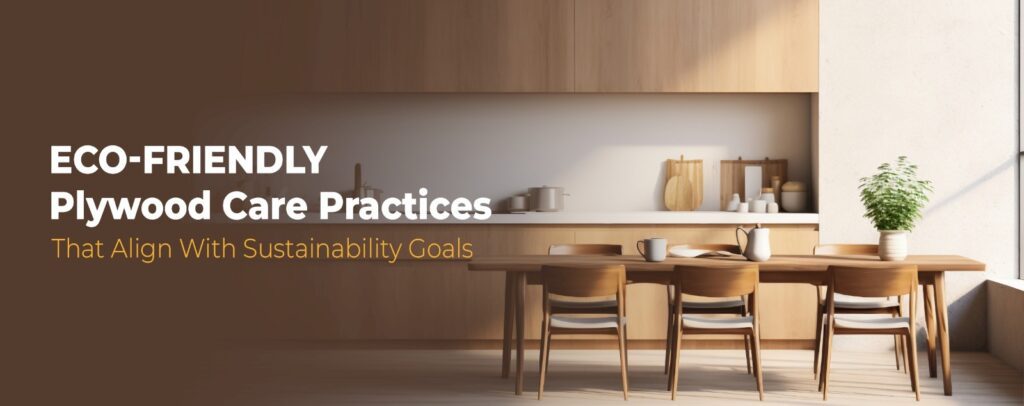



In an era where sustainability is at the forefront of our collective consciousness, every aspect of our lives demands a closer look to ensure we are contributing positively to the environment. When it comes to construction and interior design, plywood is a popular choice due to its versatility and strength. However, conventional methods of plywood care often involve the use of chemicals and processes that may harm the environment. In this blog post, we will explore Eco-friendly Plywood care practices that align with sustainability goals, ensuring that your choice of plywood doesn’t compromise the health of our planet.
Preserving plywood sustainably is not only about maintaining its appearance and durability but also about making conscious choices that minimise the environmental impact. Traditional plywood care products often contain harmful chemicals that can contribute to air and water pollution. By adopting eco-friendly plywood care practices, you not only extend the life of your plywood but also contribute to a healthier and more sustainable living environment.
Start your eco-friendly plywood care journey by choosing the right plywood. Look for plywood that has certifications from organizations like the Forest Stewardship Council (FSC), American Society for Testing and Materials (ASTM), and Forest Wood Industries, Inc. which means the wood used is from forests managed responsibly, promoting sustainable forestry practices.
When it comes to finishing your plywood surfaces, consider using natural finishes such as beeswax, linseed oil or Tung oil instead of chemical-laden coatings. These natural finishes not only enhance the aesthetic appeal of the plywood but also provide a protective layer without compromising indoor air quality or the environment.
Maintaining the cleanliness of plywood surfaces is crucial for their longevity. However, instead of using chemical-laden cleaners, opt for eco-friendly alternatives. A mixture of vinegar and water or a mild soap solution can effectively clean plywood surfaces without introducing harmful toxins into your living space.
Wood, including plywood, is highly susceptible to changes in humidity. Excessive moisture can lead to warping and decay, while overly dry conditions can result in cracks. To preserve plywood sustainably, invest in a dehumidifier to maintain optimal humidity levels in your home. This not only ensures the longevity of your plywood but also reduces the need for energy-consuming air conditioning.
If you have excess plywood that is not immediately in use, store it in a cool, dry place to prevent moisture absorption and warping. When handling plywood, use proper lifting techniques to avoid unnecessary stress on the material. These simple practices can significantly contribute to the preservation of plywood and reduce the need for replacement.
Instead of discarding plywood pieces that may have minor damage, consider repairing them. Small cracks or dents can often be fixed with wood fillers or patches, extending the life of the plywood. Additionally, if you decide to renovate or upgrade your space, explore creative ways to reuse plywood instead of disposing of it.
In the event that plywood reaches the end of its life cycle, ensure responsible disposal. Many communities have recycling programs for wood products, including plywood. Explore local options for recycling or repurposing your old plywood, preventing it from ending up in landfills.
As we conclude, sustainably preserving plywood requires a shift in mindset and a commitment to making environmentally conscious choices. By choosing responsibly sourced, FSC-certified plywood and implementing eco-friendly care practices, you contribute to environmental conservation and a more sustainable future. With these practices, you not only enhance the longevity of your plywood but also play a vital role in minimising the ecological footprint associated with its care and maintenance. Sustainability is not just a buzzword, it’s a responsibility we all share in creating a healthier planet for future generations.





















